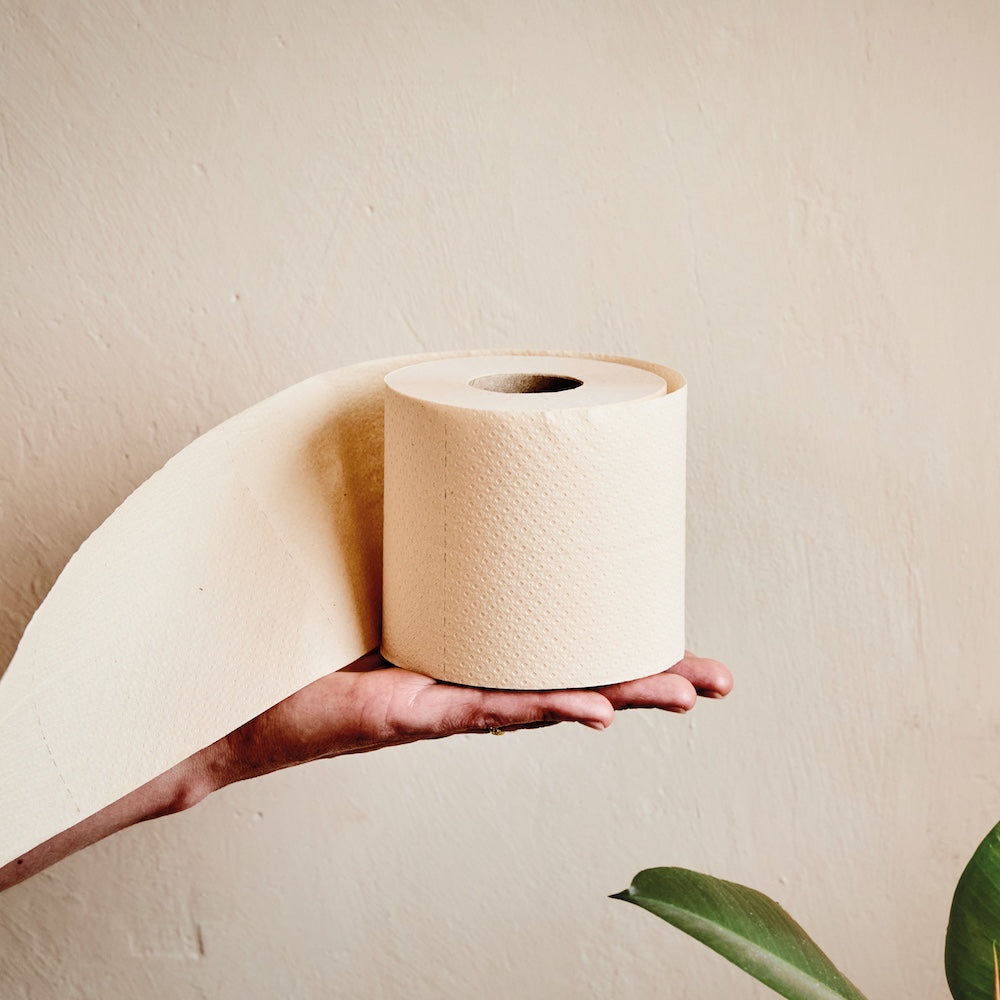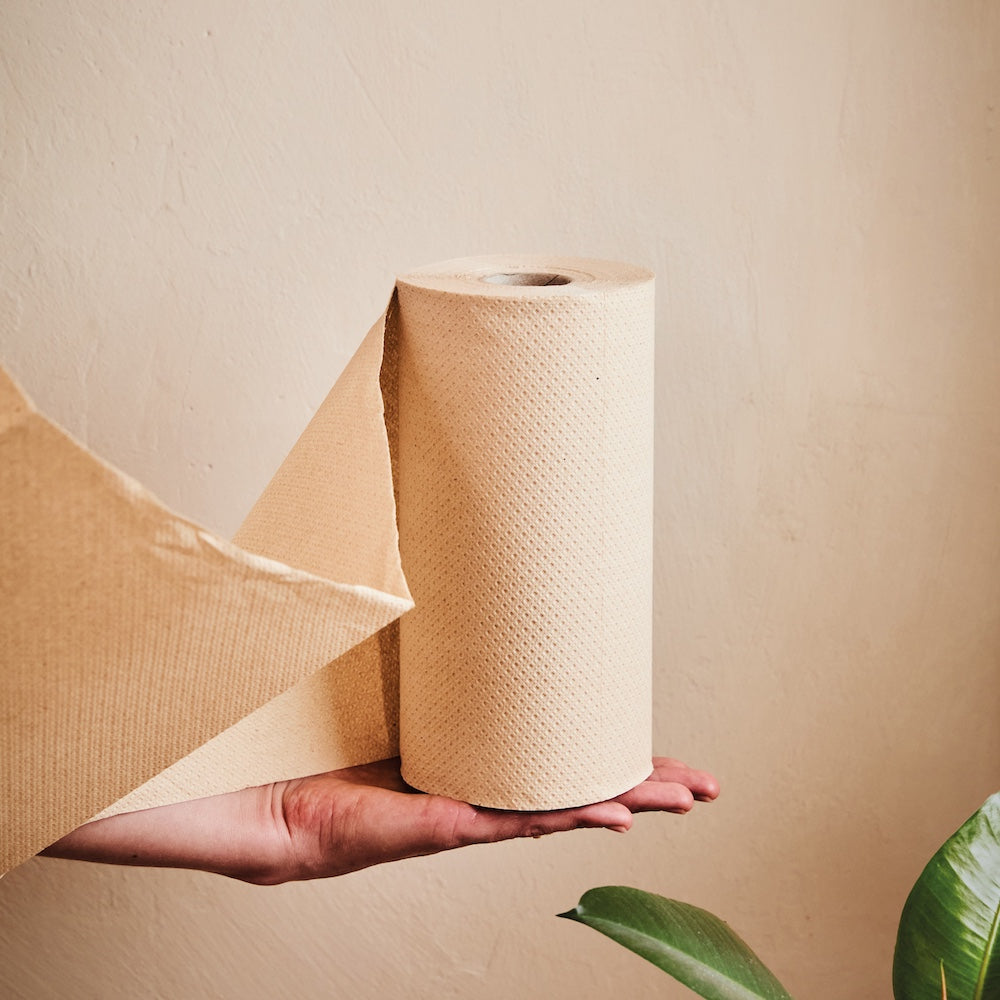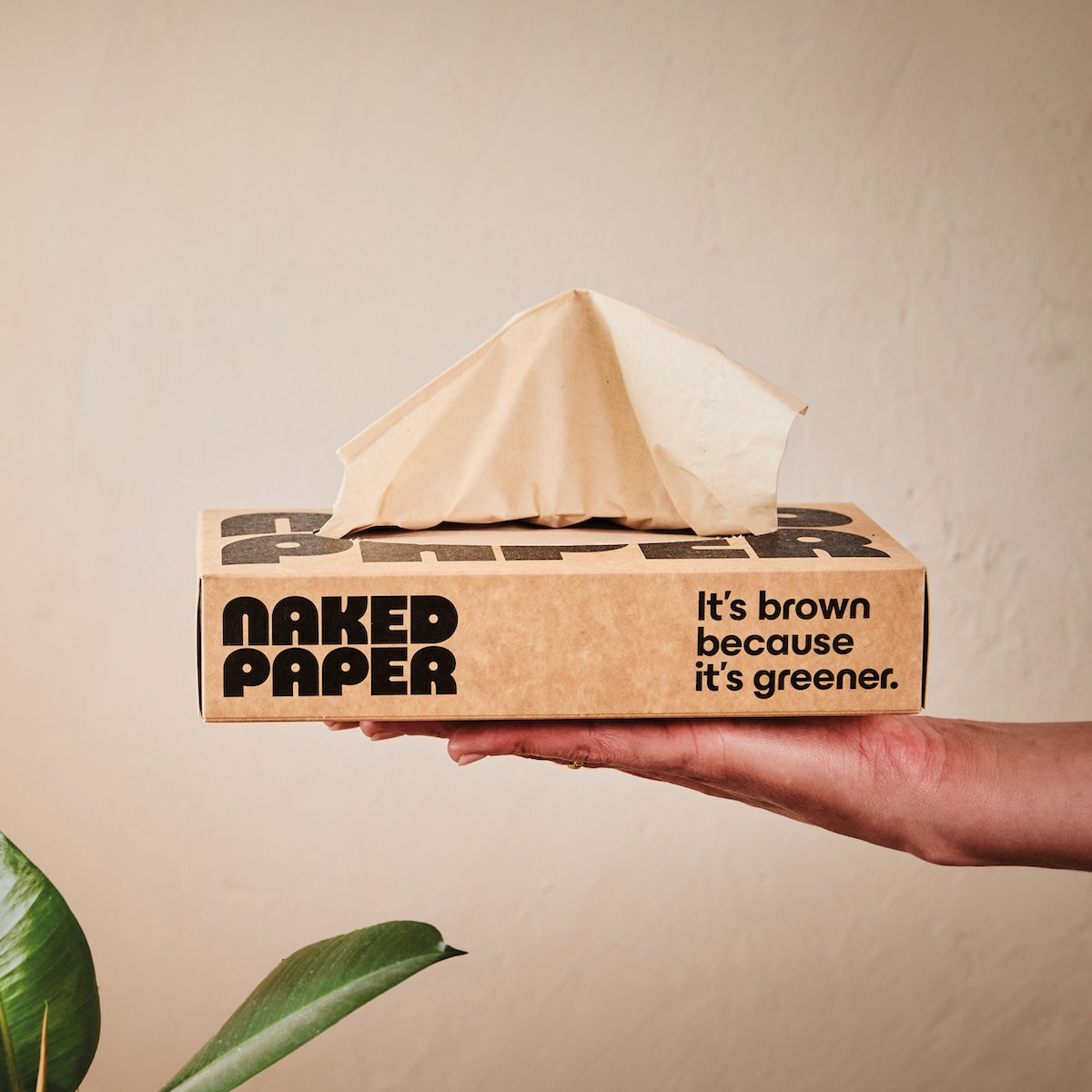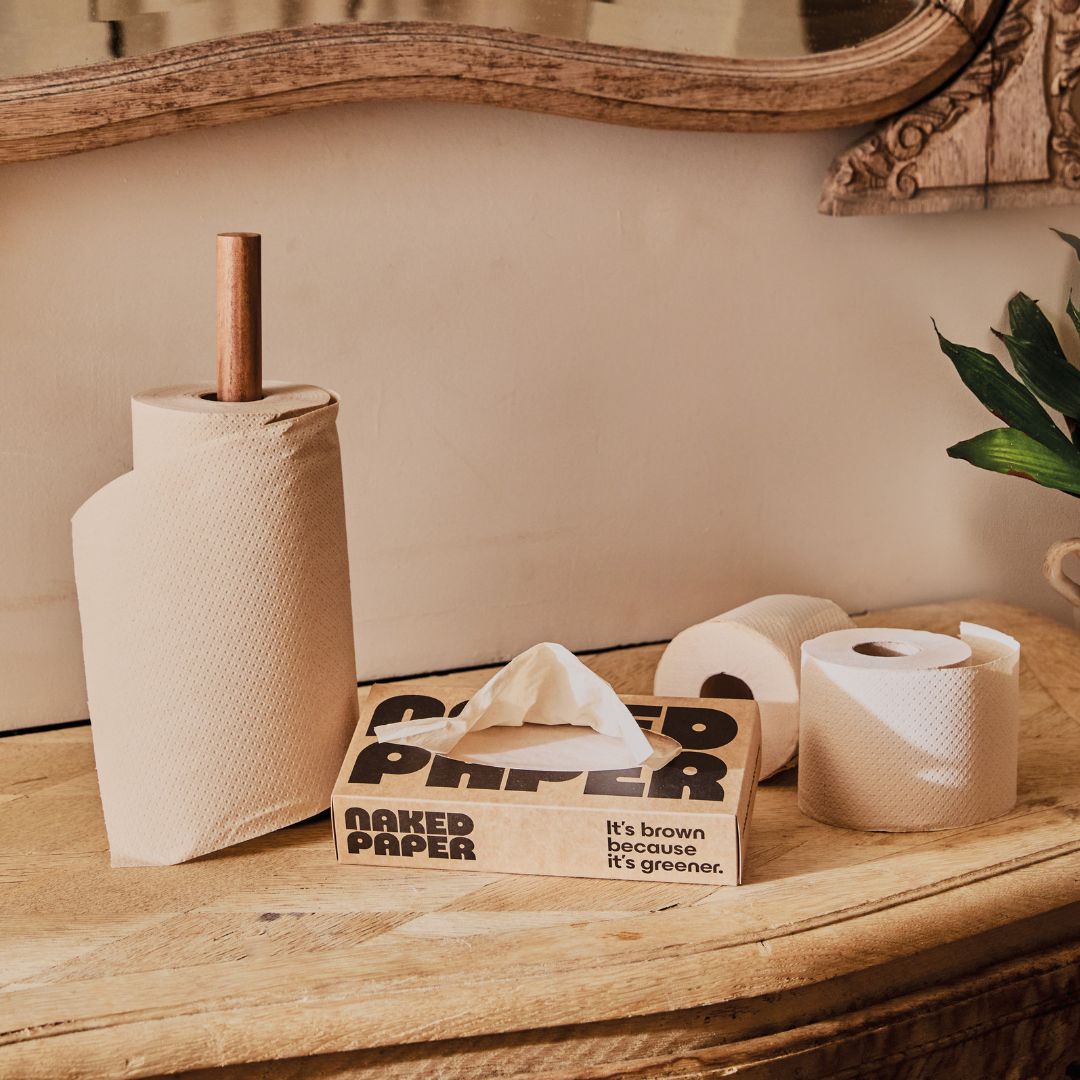Main character energy: eco toilet paper needs eco heat

Let’s talk about heat. Not the “pop the kettle on” kind (though we’re big fans of that too) but serious, furnace-level heat. Enough heat to turn soggy bamboo and recycled cardboard pulp into soft, strong toilet paper.
Heat is the main character in tissue making, and it’s a hero and a villain at the same time. You can’t make tissue without it, but as the biggest drain on energy it’s also the biggest source of CO2e emissions.
So if you care about cutting environmental impact (and we really do), you have to start here.

From pulp porridge to soft toilet paper
To understand just how important heat is to making tissue, you can consider the difference between the dry, soft sheets of Naked Paper in your bathroom, and the wet pulp it was made from.
In one corner of our factory sits a large vat of tissue pulp. It looks a bit like porridge, but you wouldn’t want to eat it. It’s cold and wet, with pea-size chunks of fibre mixed up in a pale watery sludge.
To turn this pulp into paper, we need to remove the water, fast.
Luckily, the machines in our factory are up to the task. Our tissue mill evaporates water with breath-taking speed; it takes about 1.4 seconds to dry the pulp from its liquid state to smooth, dry sheets.
But you need a lot of heat to do this, and so you need a lot of fuel. Producing the hot air that dries wet pulp burns up around 70% of the total energy used in papermaking.
And what kind of fuel gets used to make this hot air?
If you guessed that most companies are using fossil fuels, you are, sadly, correct.

Most tissue factories still burn gas (or worse, coal)
Across the industry, most tissue makers rely on fossil fuels, usually natural gas but sometimes even coal, to power their dryers. This reliance on fossil fuels is the standard across the industry, from very large manufacturers making toilet paper for huge brands and supermarkets, to smaller eco brands producing bamboo or recycled paper.
The raw materials change, but the heat is made the same way, with furnaces burning fossil fuels.
It’s a challenge for the sustainability of tissue products, because burning natural gas and coal release carbon dioxide and methane. Once these gases are released into the air, they stick around, adding to the greenhouse effect that’s warming the climate.
And even if we weren’t concerned about the climate, the use of fossil fuels is inherently unsustainable, because fossil fuels are going to run out. The need to find new sources of natural gas and coal is already wreaking a terrible impact on the planet, and as the more accessible pockets of fuels are exhausted, the environmental toll increases.
This means that if we want to make tissue without making a mess of our environment, we need to find better ways to generate heat.
Finding a factory that can get all the heat they need without turning to fossil fuels has been one of our biggest challenges, and proudest achievements.

The wildfire prevention that fuels the furnace
Step away from the porridge-like vat of pulp, head outside to our factory forecourt, and soon enough you’ll spot a huge container filled with a mixture of twigs, leaves, fallen pinecones, and bark. If you’ve ever noticed the bark mulch that’s used in landscaping or playground surfacing, it’s basically the same stuff.
This unlikely looking pile of forest sweepings is our renewable fuel, the result of local wildfire prevention work.
Our factory is located in beautiful Catalonia, in northern Spain. There’s plenty of sunshine for our solar panels, but long hot summers can mean wildfires. When temperatures hit 40°C, humidity drops to 40%, and winds reach 40 mph, wildfires can ignite spontaneously without any spark required.
To help stop wildfire combustion and prevent their spread, local environmental agencies clear dry debris from forest floors, the bark, twigs, and leaves that fall naturally over the course of the year. Those clearings could easily end up as waste, but instead, they come to us, and we use them to power our furnaces.
It could have fuelled a forest fire, instead it's drying our tissue.

Baa ram fuel
The forest sweepings provide simple, renewable heat, made from material that could otherwise have caused a wildfire. But on their own they’re not quite enough to generate the most intense heat we need.
The first part of the rapid drying process needs extreme temperatures – over 600°C – to produce the high-pressure steam that blasts the pulp. Biomass alone can’t always hit those numbers so we found another renewable fuel source for those fiery moments, and this one’s even more surprising than the twigs.
Since 2022, our factory has been using biomethane – a decarbonised gas made from organic waste. This can be generated locally by a most unlikely helper. The sheep who graze in pastures near the factory produce wool for clothing, milk for cheese, and a lot of droppings. These droppings are collected by local farmers into slurry tanks, and the gas that forms at the top of these tanks is biomethane - which can be burned to produce the very intense heat we need.
Once we’ve got furnaces fired up and ready to go, we conserve the heat they make so it’s not lost to the air after the first blast. A patented system developed at our factory keeps hot air circulating, drying twice as much tissue with the same amount of fuel, and stretching out this precious energy as far as it will go.

Affordable toilet paper with less cost to the climate
So yes, we talk a lot about our energy, and specifically our heat. Just as much as we talk about our raw materials; the bamboo and recycled card and paper that make our wonderfully soft toilet paper, our absorbent kitchen rolls, and our gentle facial tissues.
Focusing on energy rather than just raw materials sets us apart from other toilet roll manufacturers. But in tissue making, like all papermaking, that’s where the real challenge lies.
Want to try tissue products where energy is the main character?
Recent blog posts
-

2025 in toilet paper (and tissues, and kitchen roll...)
With bleach free toilet paper, kitchen rolls, and tissues sold in packs to suit the busiest households, we’re all about stocking up. And as 2025 draws to a close, it’s the perfect time to take stock as well; to pause a...
-

Discounted toilet paper when you refer a friend
Word of mouth has always been an important part of our story. Our bleach-free community is full of people who first tried Naked Paper toilet rolls, kitchen rolls, or tissues at work, or the home of someone they know. Without that...
-

Why we say "climate footprint" not "carbon footprint"
Our climate is changing as a result of the way people live, travel, and shop. And while everyone has a role to play in the transition to more sustainable ways of living, the bulk of the responsibility has to lie...







